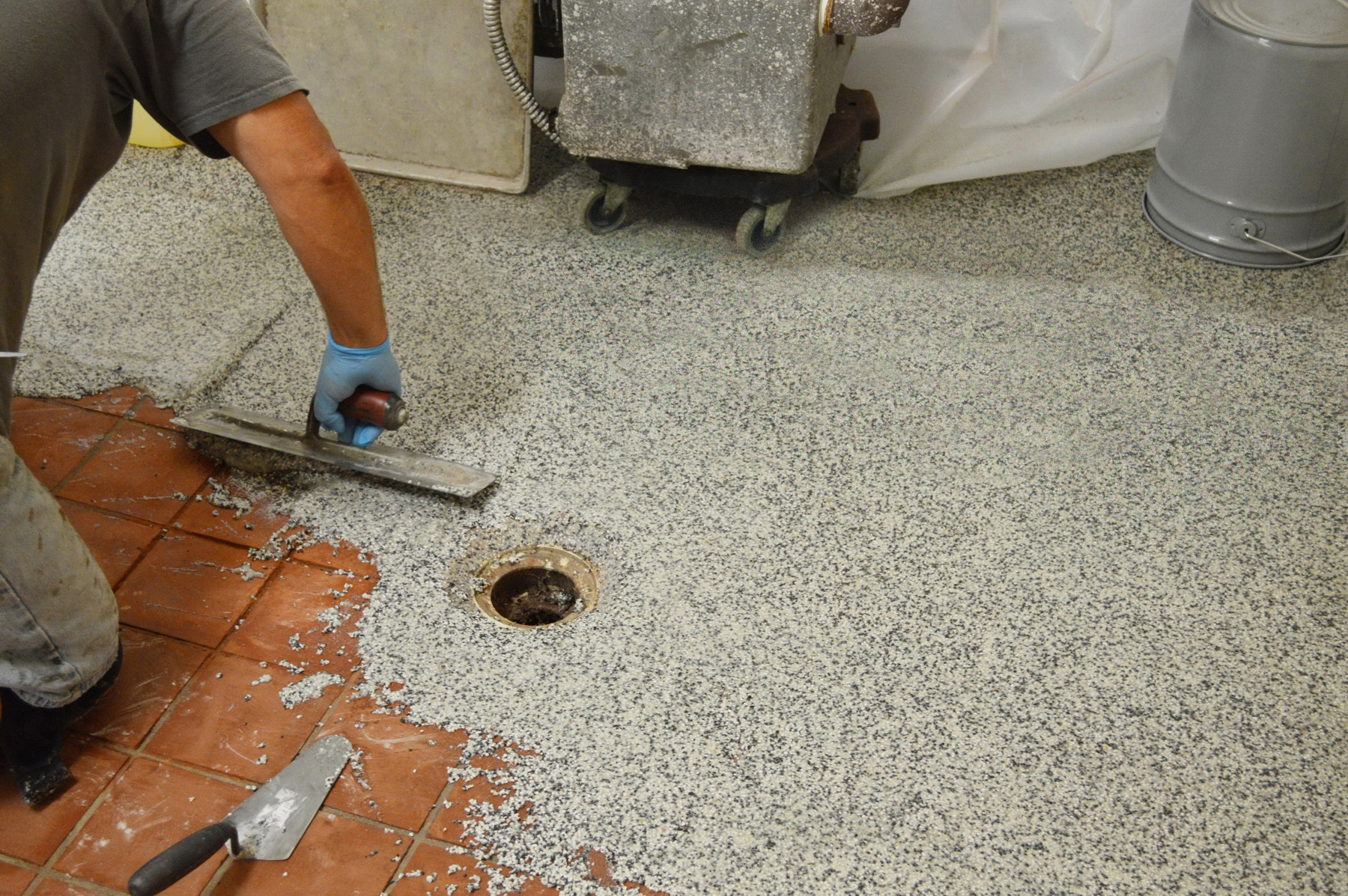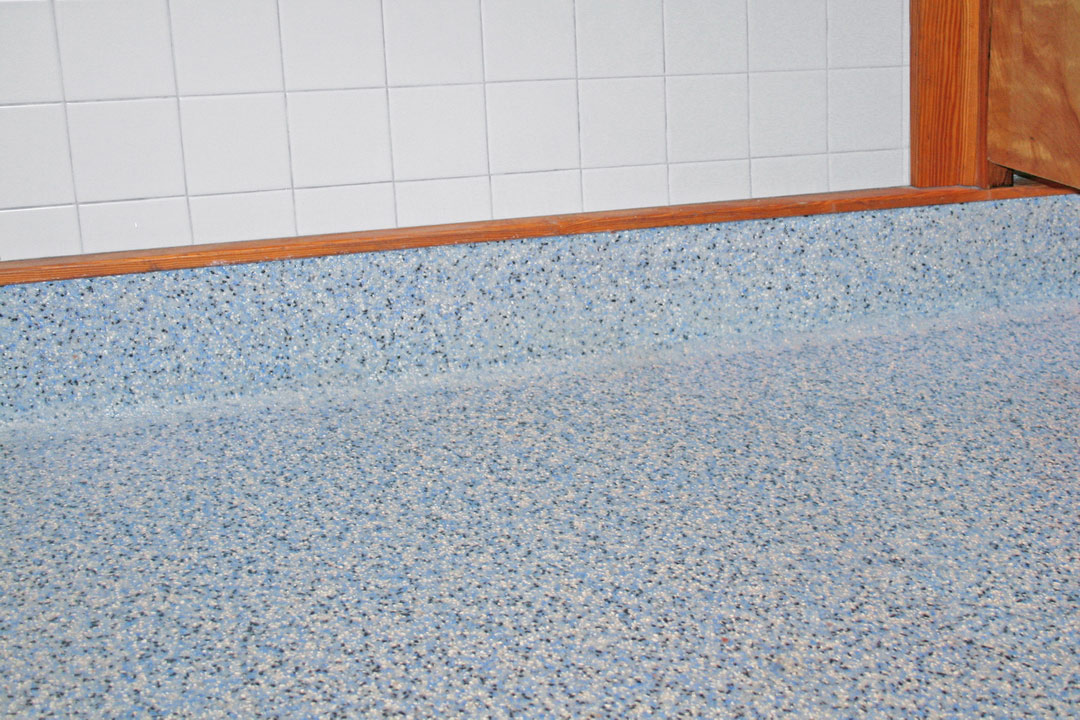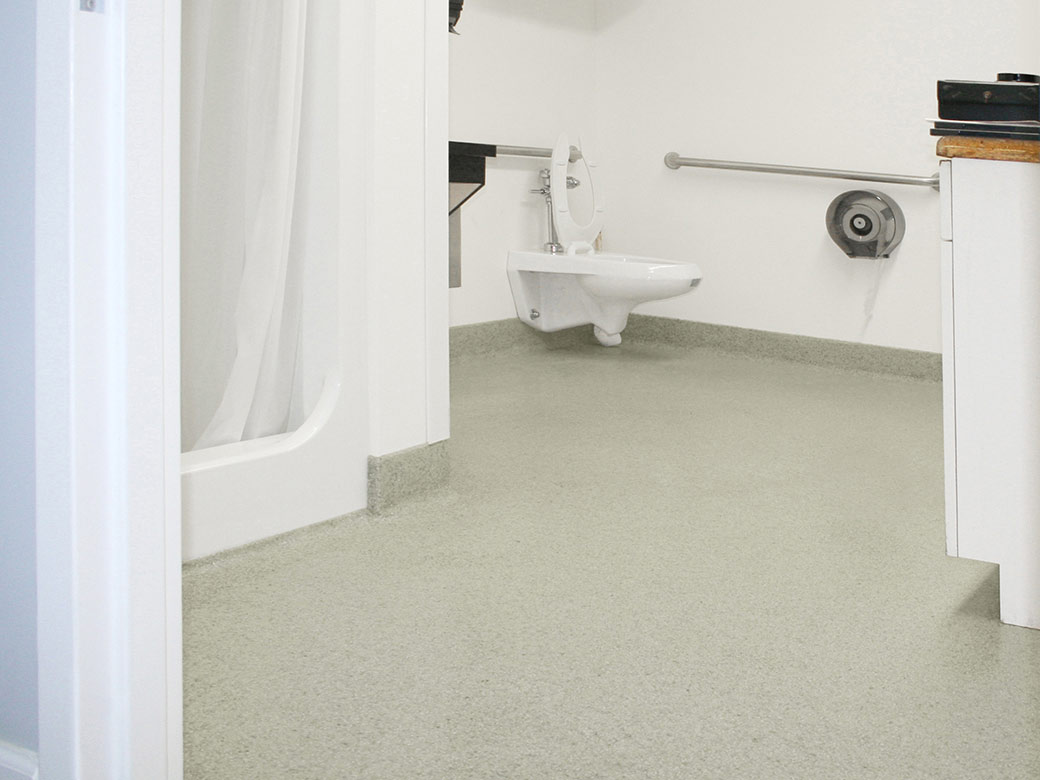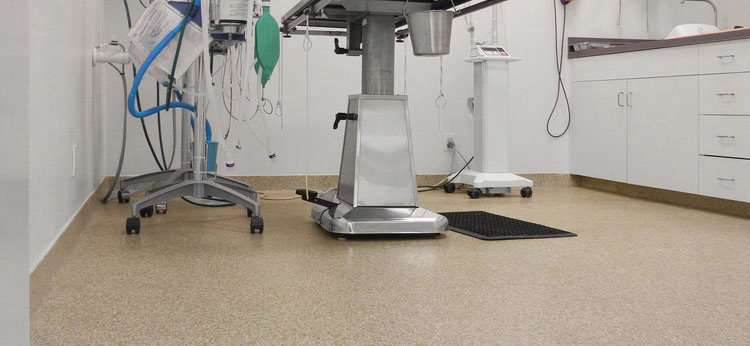The average hospital in the United States has over 600,000 square feet of floor space, so choosing the right flooring system is a crucial element in the smooth operation of a busy medical facility.
Facility managers have the hard task of specifying a flooring type that meets many non-negotiable demands—from patient safety to long-lasting durability—to ensure compliance with safety standards.
There are two main flooring systems that meet the needs of a medical facility: epoxy resin and rubber sheeting. Both are widely used in hospitals and doctor offices across the country and, at first glance, there seems little difference between them. But there’s a clear winner—which system wins out? Should you choose epoxy or rubber floors for your medical facility?
Ease of installation
Fast installation of a flooring system is a key consideration for facility managers. Many hospitals are running at capacity because of the COVID-19 pandemic, and a failed floor could mean that wards have to close while the issue is rectified.
Sheet floors, such as rubber flooring, are time-consuming to install as the sheets have to be cut to shape (which also creates a lot of waste). The rubber is then glued to the substrate before any seams are heat-welded—and these need time to cure before they’re ready for traffic.
Even after the rubberized flooring has cured, it will emit an odor that can last for weeks, which makes the environment unsuitable and unpleasant for vulnerable patients.
Everlast® Epoxy Floor is a hand-troweled epoxy floor that forms a vulcanized, seamless bond with the substrate and cures within 24 hours. The result is a nonporous, waterproof floor that is ready for use the next day.
Everlast® Epoxy Floor contains no solvents and emits no objectionable odors or harmful vapors that could compromise patient safety.

Is a rubberized floor truly seamless?
Epoxy resin and rubber floors are both nonporous, which makes them both a good choice for medical environments in which bodily fluids, water, and chemicals are likely to end up on the floor.
But rubberized sheet flooring is not totally seamless. The sheets are heat welded together, leaving weak points in the system. Over time, fluids and harsh detergents will cause the floor to lift at the seams or near drains.
Everlast® Epoxy Floor is truly seamless. It bonds to drains and keeps fluids contained, which are easy to clean away without first seeping into the substrate.

Rubber or epoxy: Which is more hygienic?
The main priority for any medical facility is to minimize the spread of infection and keep patients safe.
Epoxy flooring is manufactured with an integral EPA-registered antimicrobial component to impede the growth of microorganisms. This protects the floor from germ-causing microorganisms and a broad spectrum of bacteria, fungi, yeast, and mildew.
In contrast, rubber flooring will eventually fail around the heat-welded seams, causing the surface to loosen. Debris and fluids can then seep under the surface, damaging the adhesive and causing it to lose its grip on the substrate. This provides a dark, damp breeding ground for bacteria, which can quickly spread.
No amount of cleaning will guarantee a microbe-free facility, but an epoxy resin system provides your floors with superior protection compared with rubberized alternatives.

Slip-resistant properties
Slips and trips are an increased hazard in an environment in which vulnerable people are involved. When wet, smooth rubber flooring can become very slippery—and even more so if the floor has been polished to a shine.
Hospitals need to safely cope with heavy traffic from wheelchairs, porters moving beds, and medical staff moving between patients, minimizing risks of slips. Epoxy flooring has a textured finish, similar to sandpaper, that provides excellent skid-resistance—even in wet conditions. This makes it an ideal choice for hospital bathrooms, corridors, and surgery rooms.

Epoxy flooring: the right choice for healthcare facilities
From laboratories to operating rooms, epoxy resin is a superior flooring solution compared with rubberized alternatives.
With its antimicrobial properties and a nonslip surface, medical facility managers will realize that Everlast® Epoxy is the smart choice when deciding between epoxy or rubber floors for their hospital. For more information, call our team at (800) 708-9870 or contact us online.
